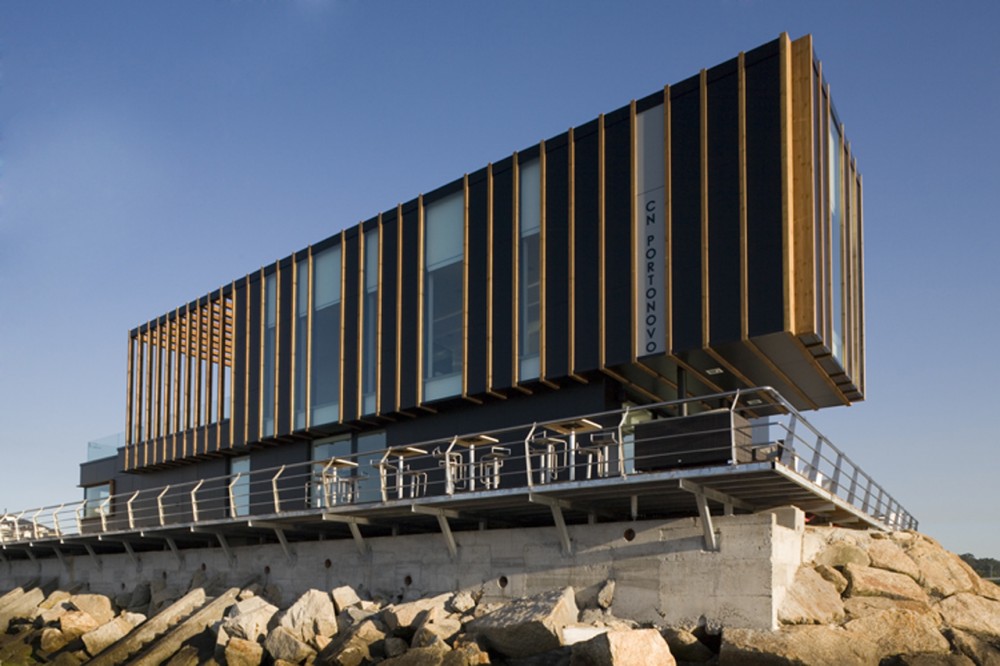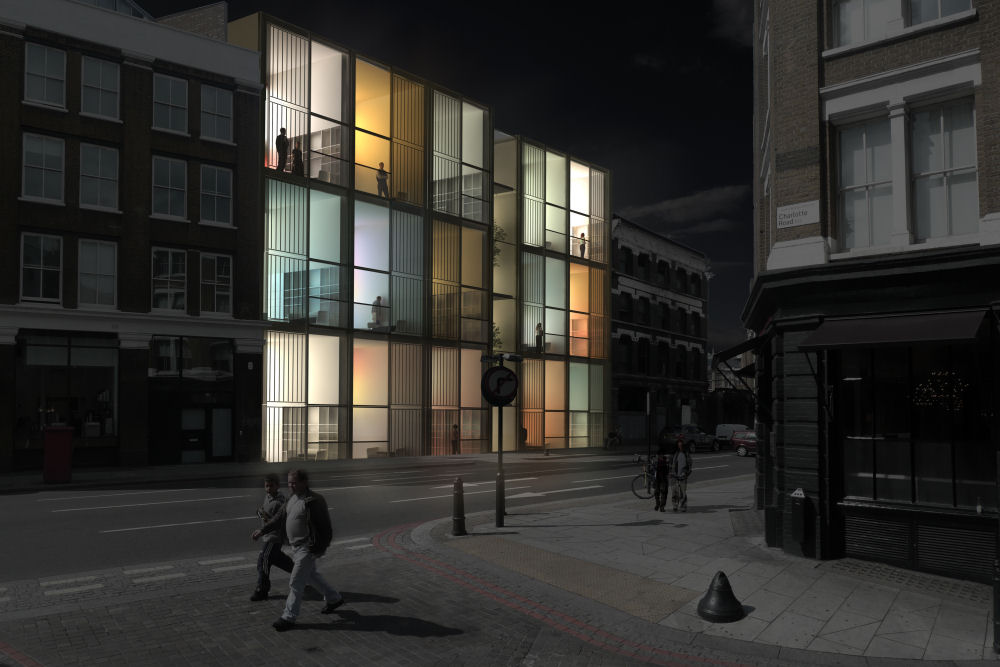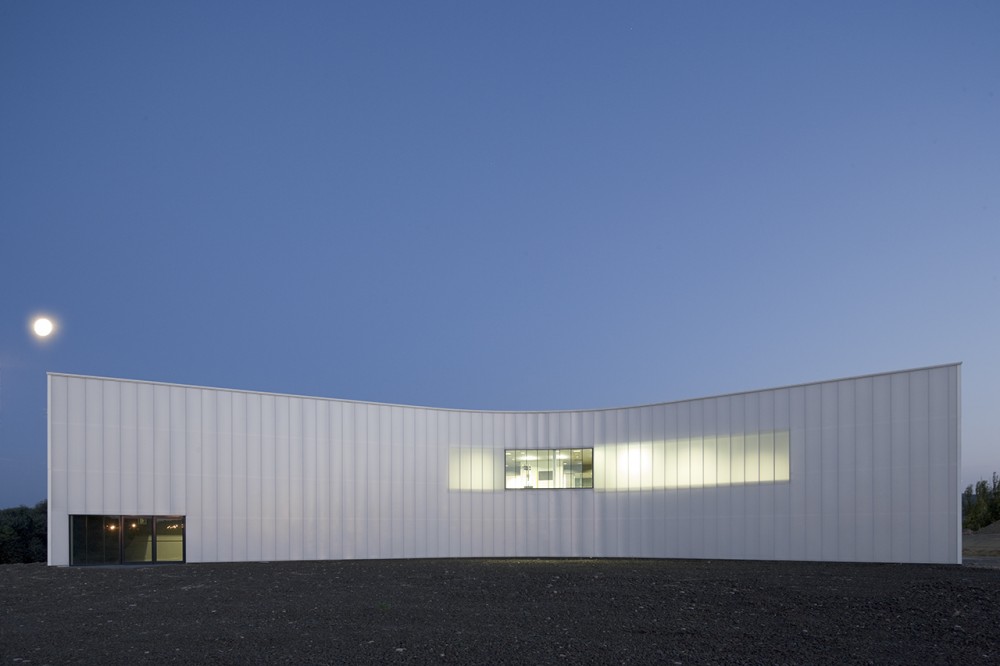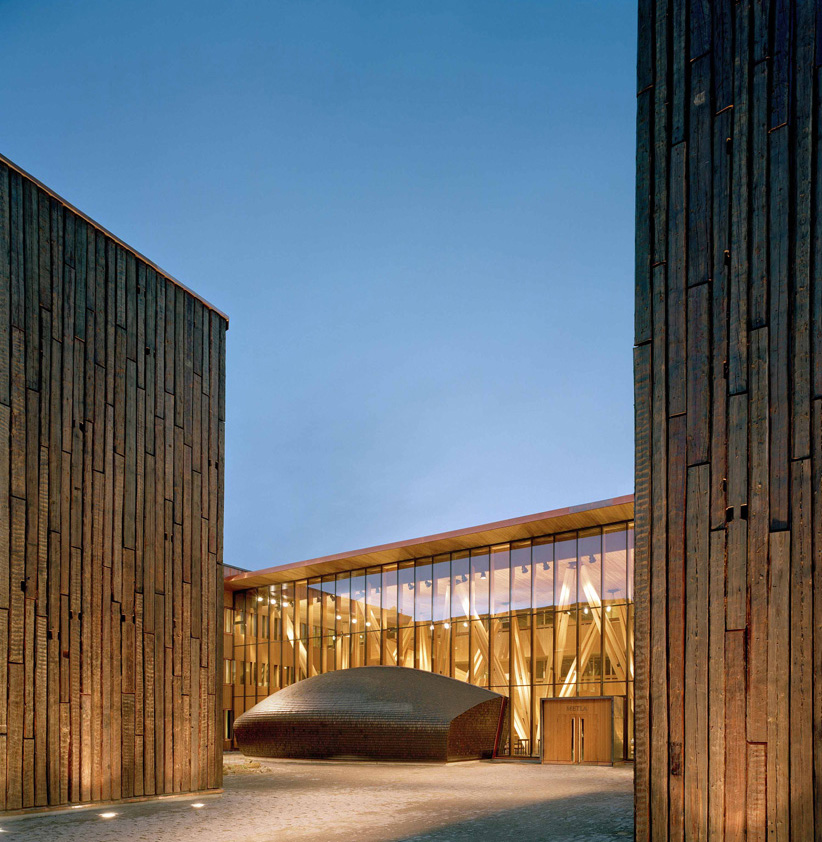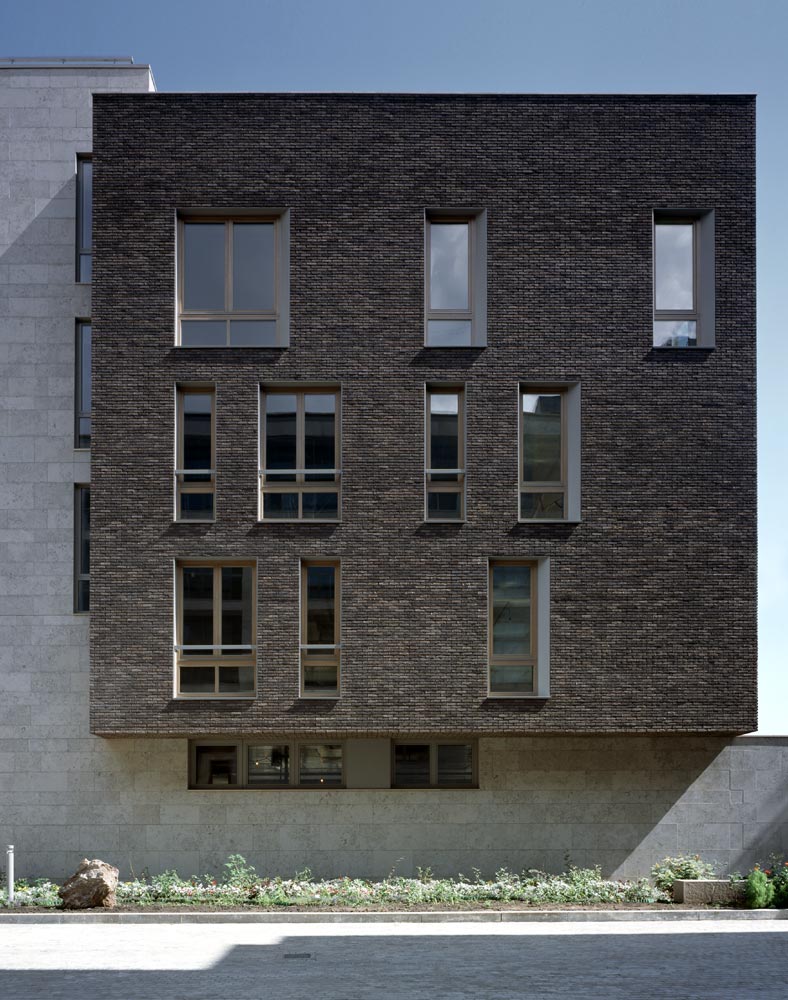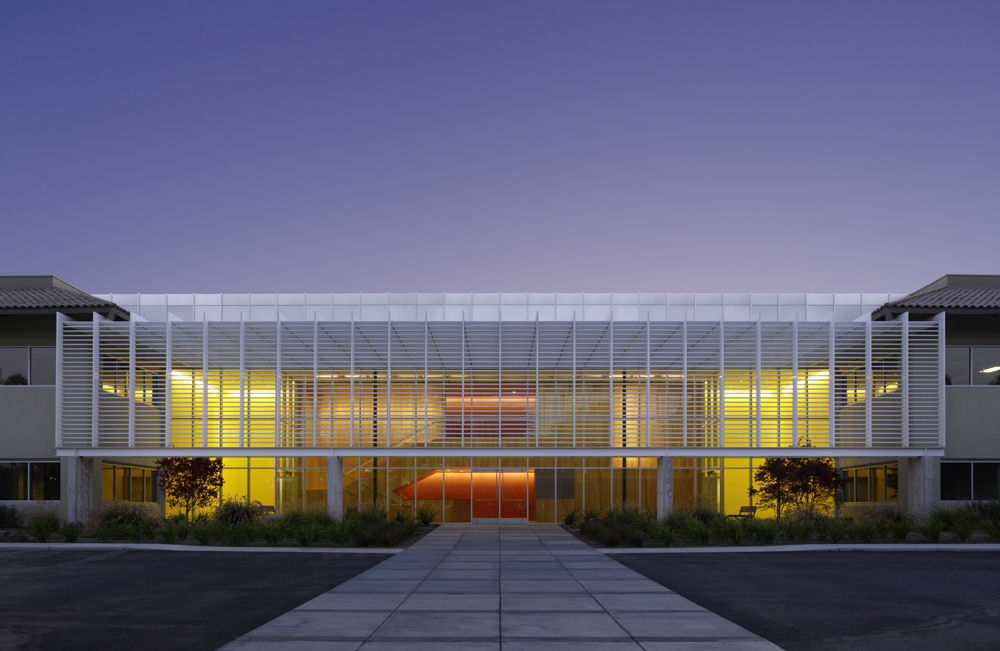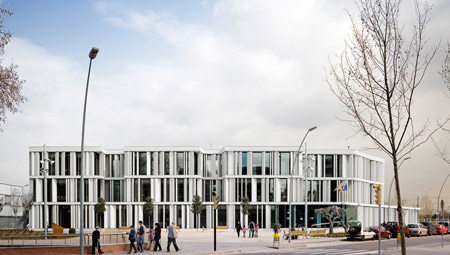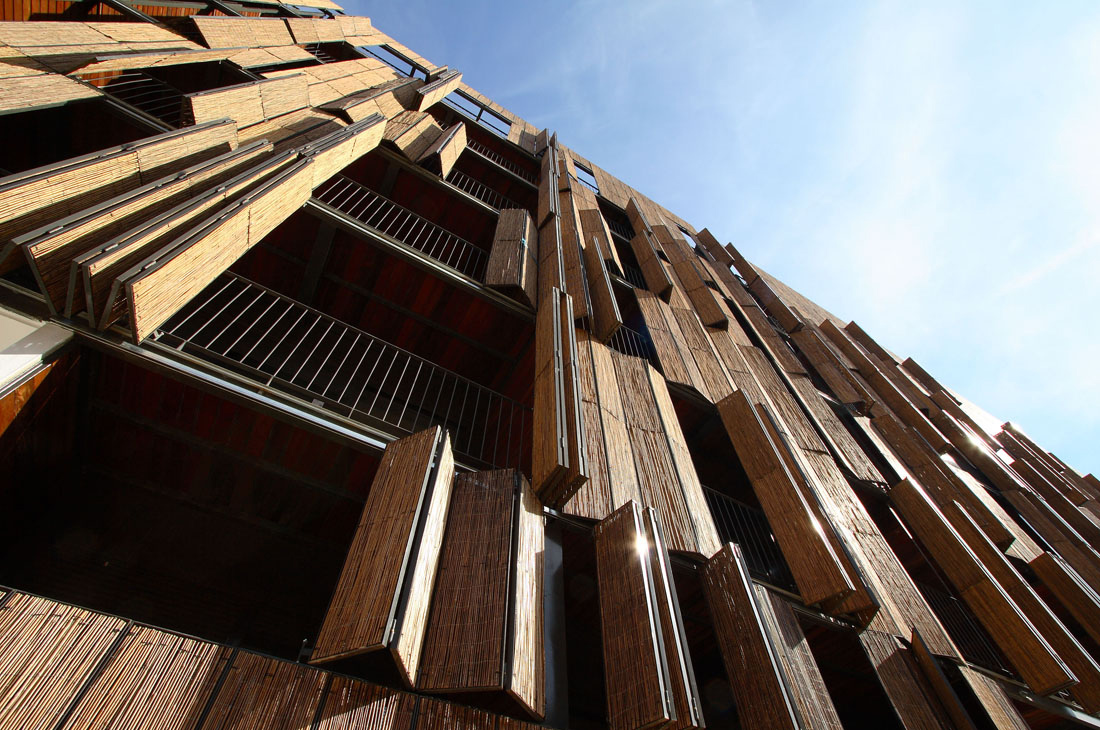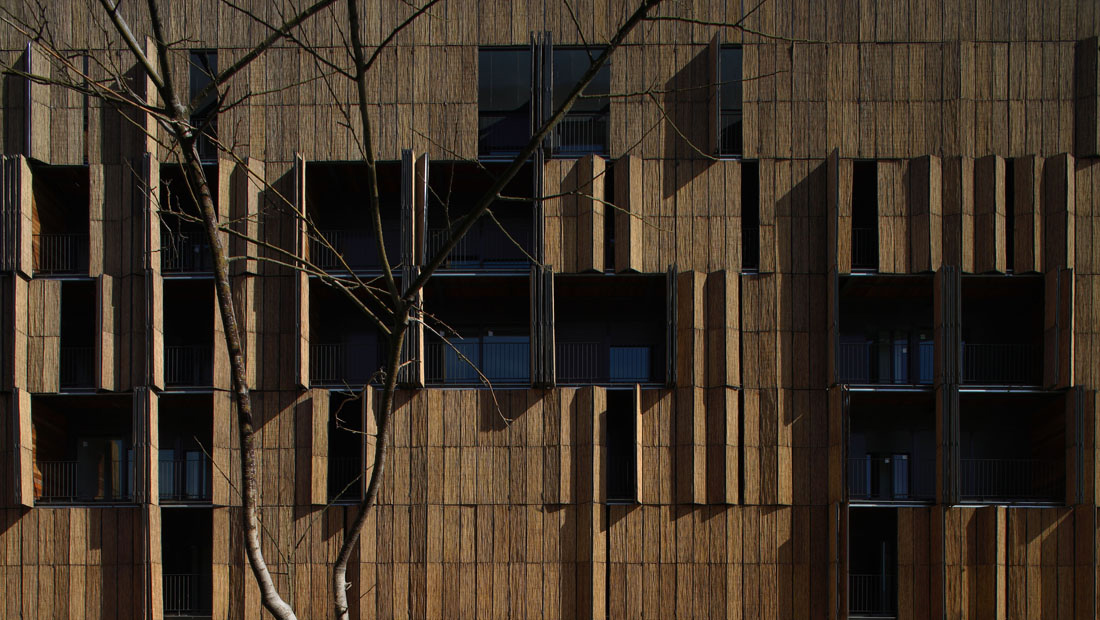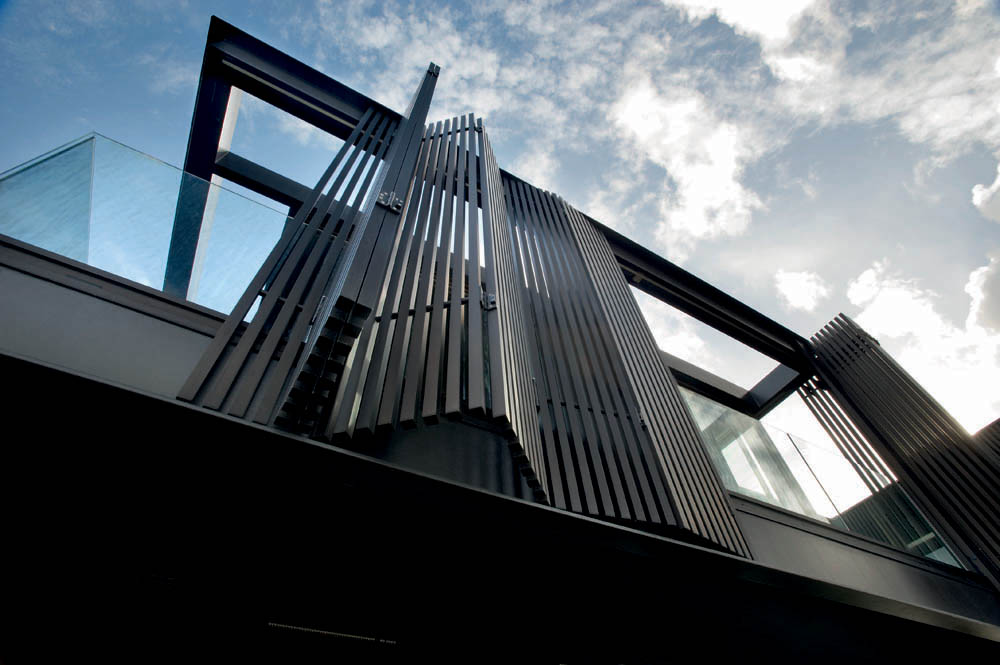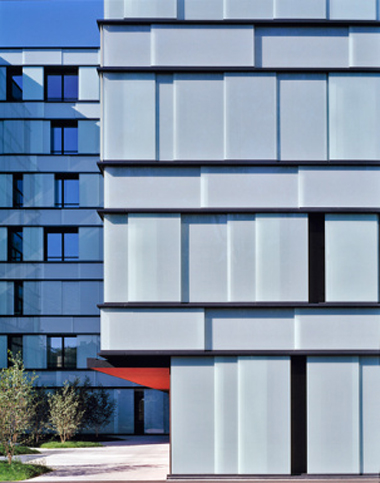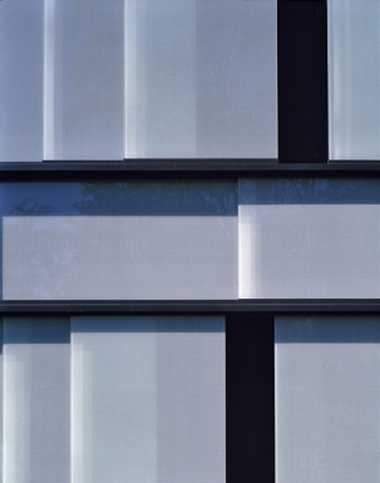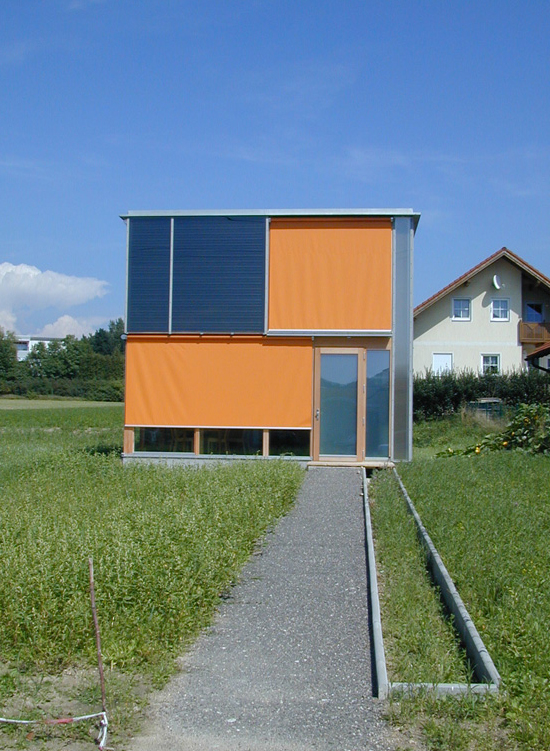shade
one of the key components in making a high performance building is a proper exterior shading device. combined with thermal mass and natural ventilation, a building can be passively cooled in most climates. a properly sized overhang, a fixed sunscreen, or a deciduous tree can sometimes provide an adequate solution, but unfortunately in our unpredictable northwest climate the cooling days don't coincide so perfectly with the arc of the sun or the leafy seasons. the most effective shading solution is usually an active adjustable shading, allowing precise shading only when desired, but also providing an animated building facade and creating an architectural language directly related to comfort and energy performance. too often the shading device is poorly conceived (wrong orientation or improperly sized), relegated to the interior where it's too late to prevent heat gain, or cut from the project due to cost considerations. yet, here in the temperate pacific northwest it is becoming more and more common to find good money spent on air conditioning to provide cooling for those few hot days. instead, that money could be shifted to the facade construction, substantially reducing energy use while creating beautiful architecture.
here are a few interesting european examples to start the conversation:
mgf architekten, university for technical studies, aalen
foreign office architects, carabanchel house, madrid
freshwater house, chenchow little architects, sydney
baumschlager-eberle, eichgut housing, winterthur
weil arets, university library, ultrecht
walter unterrainer, passive house
karawitz architecture, passive house, bessancourt

